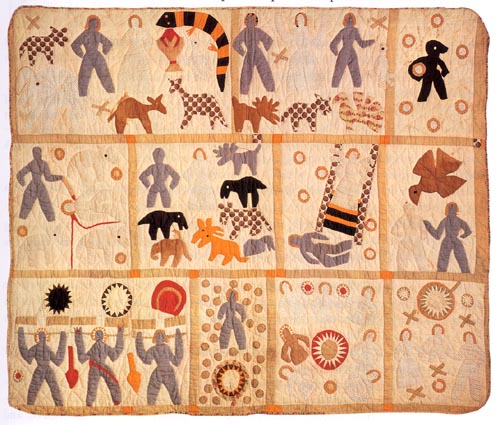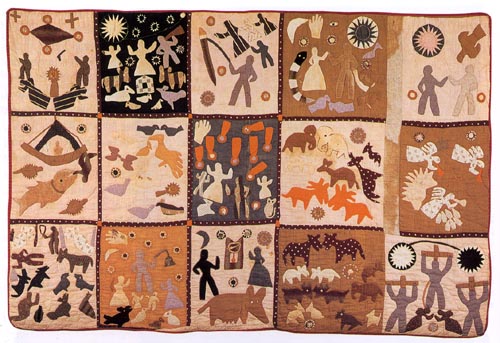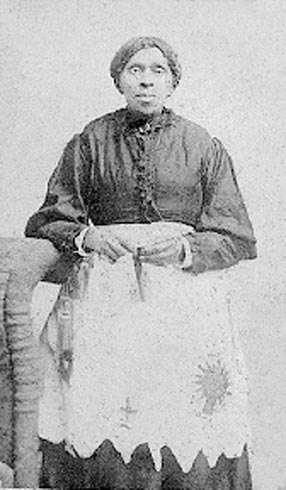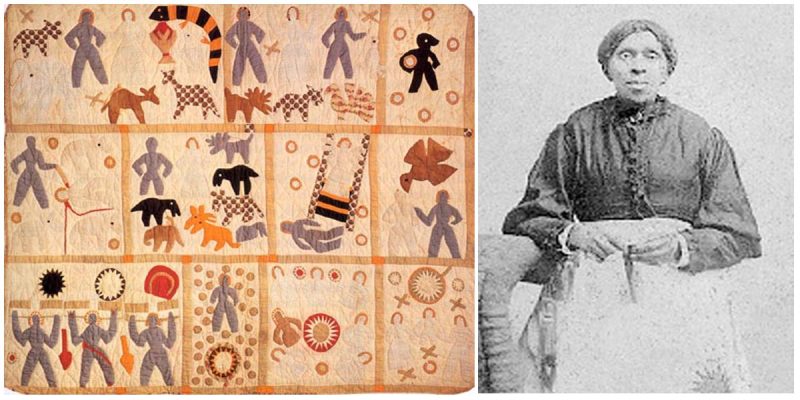Harriet Powers is one of the best-known African-American quiltmakers. Two of her quilts are still in existence today, and they are the finest examples of the Southern American quilting tradition. Harriet created these two quilts after the Civil War when she was freed from slavery.
Using the traditional appliqué technique on her quilts, Powers recorded stories from the Bible, local legends from Georgia and astronomical events.

Born in slavery near Athens in Georgia, Harriet was working on a plantation which was owned by the Lester family in Madison County. At that period, she learned to saw, and she read only Bible stories. When she was eighteen, she married Armstead Powers with whom she had nine children.
When the Civil War ended, they owned four acres of land and had a farm. The acres of the land were slowly sold by her husband because they had financial difficulties. After a lot of struggling, Armstead left Harriet, and she supported herself as a seamstress. The first exhibition of her quilts took place at the Athens Cotton Fair in 1886 in Georgia.

One of her first quilts was the Bible Quilt. This quilt is one of the two which today can be seen in the Smithsonian Institution. At the fair, a woman named Jennie Smith wanted to purchase the quilt, but Harriet didn’t want to sell it. Unfortunately, a few years later, Powers was having financial difficulties again, and she sold the piece for five dollars.
There is no accurate information about the second quilt (The Pictorial Quilt). One account suggests that it was purchased in 1898 in Tennesse and later was presented to the Reverend Charles Cuthbert who sold it to Maxim Karolik.

The Bible Quilt depicted Bible stories such as the famous story of Jacob and the ladder which represented an escape from slavery. The Pictorial Quilt was a combination of African and Christian symbols which also depicted astronomical and meteorological events. It was made of cotton, divided into fifteen striking pieces.
Read another story from us: Phillis Wheatley: the first published African-American female poet
Today, there is only one photography of Harriet that was made around 1897. Her grave was discovered in 2005 by a student in history at the University of Georgia. It is located at the Gospel Pilgrim Cemetery in Athens, and the headstone reveals that she died on January 1st, 1910. According to Wikipedia, in 2009, Harriet was inducted into the Georgia Women of Achievements Hall of Fame.
